Weather:
- Ha Noi 27oC
- Da Nang 29oC
- Ho Chi Minh 32oC
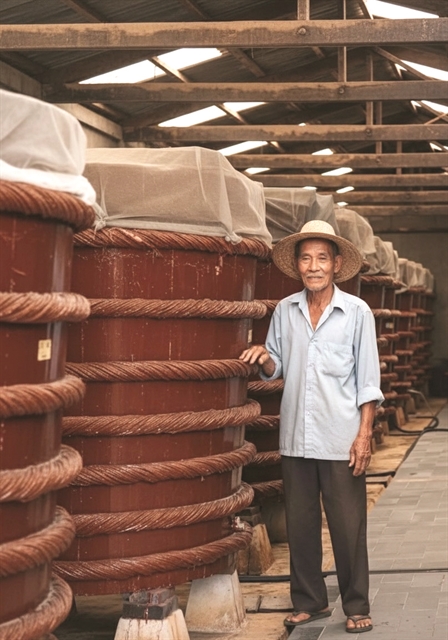
Phú Quốc Island, located in An Giang Province, is the birthplace of one of Việt Nam’s most treasured cultural legacies – the centuries-old traditional fish sauce craft, known as the “soul of the Pearl Island”.
In 2021, the Ministry of Culture, Sports and Tourism recognised “Traditional fish sauce making in Phú Quốc” as a National Intangible Cultural Heritage.
For more than 200 years, this time-honoured craft has endured countless ups and downs, yet it continues to embody the pride of the islanders and the Vietnamese nation, serving as both a cultural treasure and a unique highlight of Phú Quốc’s tourism landscape.
Essence of tradition
Traditional fish sauce production in Phú Quốc is not merely a livelihood but an art form, an intergenerational legacy woven into the daily life and identity of the island’s residents.
Each drop of Phú Quốc fish sauce reflects the natural bounty of the sea and the meticulous craftsmanship of its people.
Its unique characteristics distinguish it from other varieties across the country, earning the brand name “Phú Quốc Traditional Fish Sauce – The Heritage Flavour of the Pearl Island”.
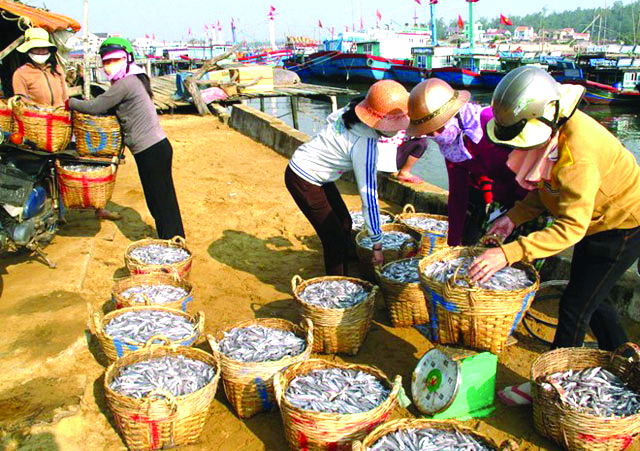
Local master artisans explain that what makes Phú Quốc fish sauce distinctive lies in the island’s natural conditions and resources.
Various species of anchovies, the primary raw material, are caught in the surrounding waters.
The salt used for fermentation is sourced from former Bà Rịa Vũng Tàu and Bình Thuận provinces, or equivalent coastal regions, and is preserved for at least 60 days before use to ensure purity.
Once caught, the anchovies are washed and salted directly on boats in a ratio of 2.5 to three parts fish to one part salt, then transferred to giant wooden barrels for fermentation.
These barrels are crafted from hardwood, and the fish is left to ferment naturally for between 12 and 15 months under traditional wooden roofs.
According to Đặng Thành Tài, chairman of the Phú Quốc Fish Sauce Association, the authenticity of the product is guaranteed by the strict prohibition against any additives or preservatives during the mixing and extraction process.
The sauce has a deep amber colour, a mild aroma without a strong fishy smell, and a rich taste that balances saltiness with natural savour plus umami from the fish protein and fat.
At present, Phú Quốc has over 7,000 fermentation barrels, with an annual output of 15–20 million litres of fish sauce.

Voices of artisans
For many local craftsmen, the essence of Phú Quốc fish sauce lies not only in ingredients but also in the heart of its makers.
“Each barrel of fish sauce is like a living being. It requires care, patience, and respect for the sea’s rhythm. When you open the barrel after 12 months, what you get is not just fish sauce — it’s the spirit of the island,” says Nguyễn Văn Hòa, an artisan with more than 40 years of experience in Dương Đông Town.
He notes that maintaining this tradition is increasingly difficult as raw material prices rise and wooden barrels become harder to find.
“A 10-tonne batch of anchovies now costs nearly VNĐ500 million (US$19,600). If we don’t protect this craft, many young people will leave it behind,” he adds.
Another veteran artisan, Trần Thị Lựu, whose family has made fish sauce for three generations, says that making true Phú Quốc fish sauce cannot be rushed. “It takes time to reach its golden colour and balanced flavour. Machines may speed up bottling, but not fermentation. If we lose patience, we lose our soul,” she says.
Meanwhile, Nguyễn Thành Phú, a major producer in Cửa Cạn Commune, says he believes the Government’s PDO recognition is vital but should go hand in hand with support for small producers.
“Modern technology can help ensure hygiene and consistency, but our traditional wooden-barrel fermentation — that slow dance between fish and salt — must remain unchanged,” he emphasises.

Protecting national brand
In 2001, Phú Quốc fish sauce became the first Vietnamese product to receive national certification for geographical indication from the Intellectual Property Office under the Ministry of Science and Technology.
More than a decade later, in October 2012, it made history again as the first Vietnamese product to be granted Protected Designation of Origin (PDO) status by the European Commission. This recognition cemented its reputation and quality in international markets.
By 2021, the traditional craft of Phú Quốc fish sauce was officially listed as a National Intangible Cultural Heritage by the Ministry of Culture, Sports and Tourism.
These milestones form a robust foundation for the brand’s sustainable development, opening new opportunities for Phú Quốc fish sauce to expand both domestically and globally.
According to the Phú Quốc People’s Committee (Administration), the island currently has more than 100 production facilities employing over 1,000 workers.
The total annual revenue from traditional fish sauce production is estimated at around VNĐ1 trillion (US$40 million), including both domestic sales and exports.
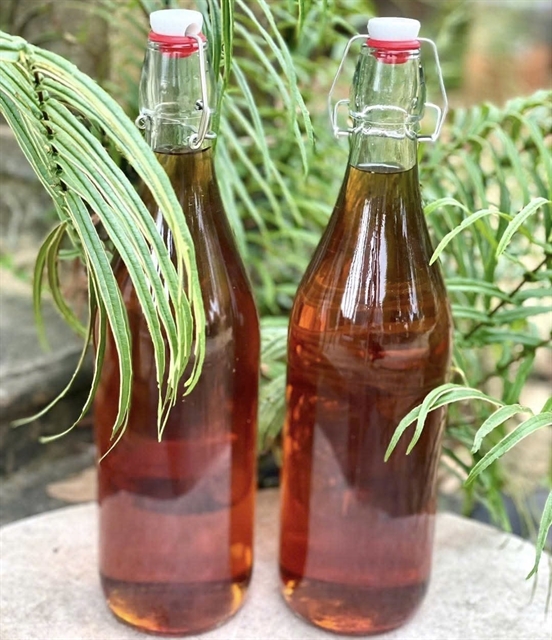
Heritage through tourism
Ngô Thanh Vũ, head of the Planning and Tourism Development Division under the An Giang Department of Tourism, emphasises that the province’s strategy to strengthen its maritime economy is closely linked with cultural tourism, and Phú Quốc’s traditional fish sauce craft plays a crucial role in this direction.
He suggests that integrating this traditional industry with tourism is a promising way to both preserve heritage and boost the local economy.
A proposal to establish the Phú Quốc Traditional Fish Sauce Craft Museum has gained significant attention from local authorities and artisans.
The museum, if realised, will not only serve as a cultural landmark but also as an economic and tourism hub.
It aims to preserve the intangible cultural heritage of fish sauce making that has existed for more than two centuries, while educating visitors about its history, production process and unique characteristics.
The museum will act as a bridge between generations, showcasing the skills, tools and stories of the artisans who have safeguarded this trade.
It will also serve as a platform to promote the Phú Quốc brand to the world, enhance the value of its geographical indication, and strengthen its position in global markets.
“Building the Fish Sauce Museum will create a distinctive tourist attraction, displaying production techniques, cultural values and authentic products,” says Hồ Kim Liên, chairwoman of the Việt Nam Traditional Fish Sauce Association.
“It will also encourage communication campaigns and annual festivals to celebrate this heritage, such as the Phú Quốc Traditional Fish Sauce Festival, which could become a signature event of the island.”
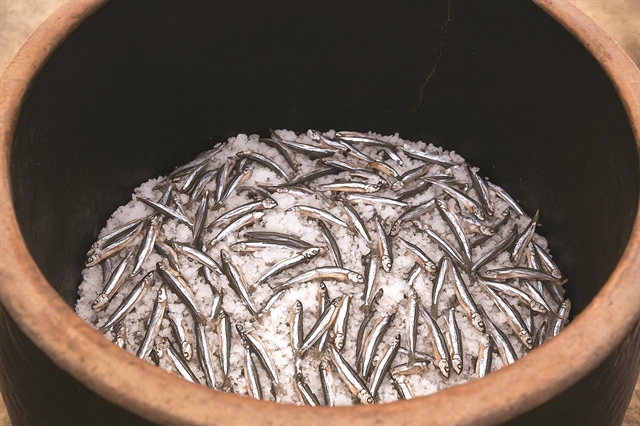
‘Open barrel' model
In addition to the museum, Phú Quốc authorities encourage enterprises to develop “open barrel house” models – traditional fish sauce factories that welcome visitors to observe and experience the production process.
Tourists can witness every step, from anchovy fishing and fermentation to sampling freshly dripped fish sauce and purchasing bottled products.
This model not only provides an immersive cultural experience but also increases the income of local producers through direct sales and tourism-related services.
The local government has pledged to support businesses in training professional tour guides and staff to ensure high-quality service for visitors.
At the same time, young generations are being encouraged to learn the craft through training programmes organised by the Phú Quốc Fish Sauce Association.
These initiatives aim to preserve the traditional know-how while promoting gradual technological improvements that maintain original fermentation methods.
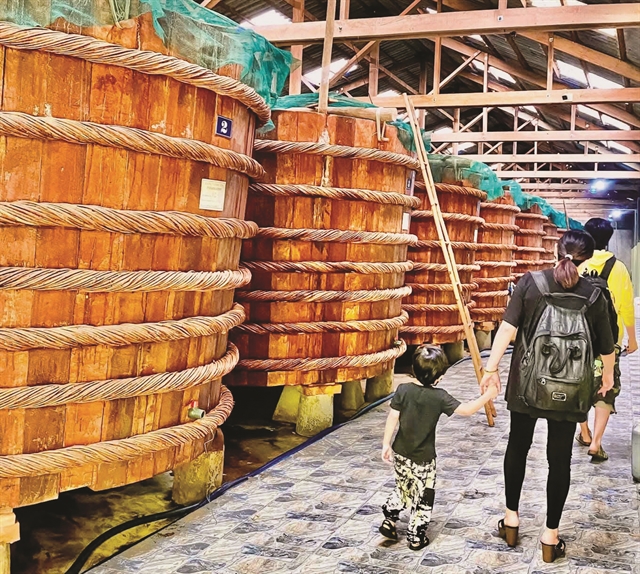
Sustaining the heritage
Trần Minh Khoa, chairman of the Phú Quốc People’s Committee, affirms that the sustainable development of the fish sauce industry is a core part of the island’s socio-economic strategy.
He stresses that the local government is committed to working with producers and enterprises to protect intellectual property rights associated with the Phú Quốc geographical indication, while expanding trade promotion and strengthening the brand’s global reputation.
In the coming years, Phú Quốc aims to establish closer cooperation between producers, businesses, scientists and state agencies to ensure sustainable growth.
The combination of heritage preservation and tourism development is expected to create a signature cultural tourism product, reinforcing Phú Quốc’s identity as both the “Pearl Island” of Việt Nam and the homeland of the country’s most famous fish sauce.
Beyond being a culinary product, Phú Quốc fish sauce represents a profound cultural and intellectual asset.
Its effective management and sustainable development will not only maintain the essence of the “heritage flavour of the Pearl Island” but also contribute to affirming a national brand on the global stage, promoting eco-tourism and cultural pride for generations to come. VNS
